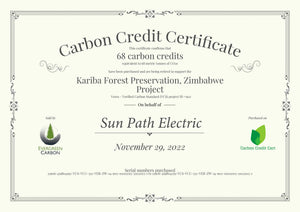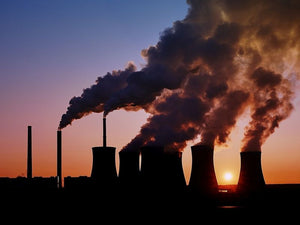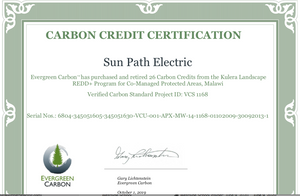
COP27 Reaches Breakthrough Agreement on New “Loss and Damage” Fund for Vulnerable Countries
UN Climate Change News, 20 November 2022 – The United Nations Climate Change Conference COP27 closed today with a breakthrough agreement to provide “loss and damage” funding for vulnerable countries hit hard by climate disasters.
“This outcome moves us forward,” said Simon Stiell, UN Climate Change Executive Secretary. “We have determined a way forward on a decades-long conversation on funding for loss and damage – deliberating over how we address the impacts on communities whose lives and livelihoods have been ruined by the very worst impacts of climate change.”
Set against a difficult geopolitical backdrop, COP27 resulted in countries delivering a package of decisions that reaffirmed their commitment to limit global temperature rise to 1.5 degrees Celsius above pre-industrial levels. The package also strengthened action by countries to cut greenhouse gas emissions and adapt to the inevitable impacts of climate change, as well as boosting the support of finance, technology and capacity building needed by developing countries.
Creating a specific fund for loss and damage marked an important point of progress, with the issue added to the official agenda and adopted for the first time at COP27.
Governments took the ground-breaking decision to establish new funding arrangements, as well as a dedicated fund, to assist developing countries in responding to loss and damage. Governments also agreed to establish a ‘transitional committee’ to make recommendations on how to operationalize both the new funding arrangements and the fund at COP28 next year. The first meeting of the transitional committee is expected to take place before the end of March 2023.
Parties also agreed on the institutional arrangements to operationalize the Santiago Network for Loss and Damage, to catalyze technical assistance to developing countries that are particularly vulnerable to the adverse effects of climate change.
COP27 saw significant progress on adaptation, with governments agreeing on the way to move forward on the Global Goal on Adaptation, which will conclude at COP28 and inform the first Global Stocktake, improving resilience amongst the most vulnerable. New pledges, totaling more than USD 230 million, were made to the Adaptation Fund at COP27. These pledges will help many more vulnerable communities adapt to climate change through concrete adaptation solutions. COP27 President Sameh Shoukry announced the Sharm el-Sheikh Adaptation Agenda, enhancing resilience for people living in the most climate-vulnerable communities by 2030. UN Climate Change’s Standing Committee on Finance was requested to prepare a report on doubling adaptation finance for consideration at COP28 next year.
The cover decision, known as the Sharm el-Sheikh Implementation Plan, highlights that a global transformation to a low-carbon economy is expected to require investments of at least USD 4-6 trillion a year. Delivering such funding will require a swift and comprehensive transformation of the financial system and its structures and processes, engaging governments, central banks, commercial banks, institutional investors and other financial actors.
Serious concern was expressed that the goal of developed country Parties to mobilize jointly USD 100 billion per year by 2020 has not yet been met, with developed countries urged to meet the goal, and multilateral development banks and international financial institutions called on to mobilize climate finance.
At COP27, deliberations continued on setting a ‘new collective quantified goal on climate finance’ in 2024, taking into account the needs and priorities of developing countries.
“In this text we have been given reassurances that there is no room for backsliding,” said Stiell. “It gives the key political signals that indicate the phasedown of all fossil fuels is happening.”
The World Leaders Summit, held over two days during the first week of the conference, convened six high-level roundtable discussions. The discussions highlighted solutions – on themes including food security, vulnerable communities and just transition – to chart a path to overcome climate challenges and how to provide the finance, resources and tools to effectively deliver climate action at scale.
COP27 brought together more than 45,000 participants to share ideas, solutions, and build partnerships and coalitions. Indigenous peoples, local communities, cities and civil society, including youth and children, showcased how they are addressing climate change and shared how it impacts their lives.
The decisions taken here today also reemphasize the critical importance of empowering all stakeholders to engage in climate action; in particular through the five-year action plan on Action for Climate Empowerment and the intermediate review of the Gender Action Plan. These outcomes will allow all Parties to work together to address imbalances in participation and provide stakeholders with the tools required to drive greater and more inclusive climate action at all levels.
Young people in particular were given greater prominence at COP27, with UN Climate Change’s Executive Secretary promising to urge governments to not just listen to the solutions put forward by young people, but to incorporate those solutions in decision and policy making. Young people made their voices heard through the first-of-its-kind pavilion for children and youth, as well as the first-ever youth-led Climate Forum.
In parallel with the formal negotiations, the Global Climate Action space at COP27 provided a platform for governments, businesses and civil society to collaborate and showcase their real-world climate solutions. The UN Climate Change High-Level Champions held a two-week programme of more than 50 events. This included a number of major African-led initiatives to cut emissions and build climate resilience, and significant work on the mobilization of finance.
“We have a series of milestones ahead. We must pull together, with resolve, through all processes, may they be national, regional, or others such as the G20. Every single milestone matters and builds momentum,” said Stiell. “The next step for change is just around the corner, with the United Arab Emirates’ stewardship of the First Global Stocktake. For the very first time we will take stock of the implementation of the Paris Agreement. It will independently evaluate the progress we have made and if our goals are adequate. It will inform what everybody, every single day, everywhere in the world, needs to do, to avert the climate crisis.”
Stiell reminded delegates in the closing plenary that the world is in a critical decade for climate action. A stark report from UN Climate Change underpinned his remarks, as well as discussions throughout the two-week conference. According to the report, implementation of current pledges by national governments put the world on track for a 2.5°C warmer world by the end of the century. The UN’s Intergovernmental Panel on Climate Change indicates that greenhouse gas emissions must decline 45% by 2030 to limit global warming to 1.5°C.
COP27 President Sameh Shoukry said: “The work that we’ve managed to do here in the past two weeks, and the results we have together achieved, are a testament to our collective will, as a community of nations, to voice a clear message that rings loudly today, here in this room and around the world: that multilateral diplomacy still works…. despite the difficulties and challenges of our times, the divergence of views, level of ambition or apprehension, we remain committed to the fight against climate change…. we rose to the occasion, upheld our responsibilities and undertook the important decisive political decisions that millions around the world expect from us.”
Speaking about the year ahead, Stiell said UN Climate Change will help Parties and future COP Presidencies to navigate this path to the new phase of implementation.
A summary of some of the other key outcomes of COP27 follows below.
Technology
COP27 saw the launch of a new five-year work program at COP27 to promote climate technology solutions in developing countries.
Mitigation
COP27 significantly advanced the work on mitigation. A mitigation work programme was launched in Sharm el-Sheikh, aimed at urgently scaling up mitigation ambition and implementation. The work programme will start immediately following COP27 and continue until 2026 when there will be a review to consider its extension. Governments were also requested to revisit and strengthen the 2030 targets in their national climate plans by the end of 2023, as well as accelerate efforts to phasedown unabated coal power and phase-out inefficient fossil fuel subsidies.
The decision text recognizes that the unprecedented global energy crisis underlines the urgency to rapidly transform energy systems to be more secure, reliable, and resilient, by accelerating clean and just transitions to renewable energy during this critical decade of action.
Global Stocktake
Delegates at the UN Climate Change Conference COP27 wrapped up the second technical dialogue of the first global stocktake, a mechanism to raise ambition under the Paris Agreement. The UN Secretary-General will convene a ‘climate ambition summit’ in 2023, ahead of the conclusion of the stocktake at COP28 next year.
Snapshot of other announcements
The conference heard many announcements:
- Countries launched a package of 25 new collaborative actions in five key areas: power, road transport, steel, hydrogen and agriculture.
- UN Secretary-General António Guterres announced a USD 3.1 billion plan to ensure everyone on the planet is protected by early warning systems within the next five years.
- The UN Secretary-General’s High-Level Expert Group on Net-Zero Commitments published a report at COP27, serving as a how-to guide to ensure credible, accountable net-zero pledges by industry, financial institutions, cities and regions.
- The G7 and the V20 (‘the Vulnerable Twenty’) launched the Global Shield against Climate Risks, with new commitments of over USD 200 million as initial funding. Implementation is to start immediately.
- Announcing a total of USD 105.6 million in new funding, Denmark, Finland, Germany, Ireland, Slovenia, Sweden, Switzerland, and the Walloon Region of Belgium, stressed the need for even more support for the Global Environment Facility funds targeting the immediate climate adaptation needs of low-lying and low-income states.
- The new Indonesia Just Energy Transition Partnership, announced at the G20 Summit held in parallel with COP27, will mobilize USD 20 billion over the next three to five years to accelerate a just energy transition.
- Important progress was made on forest protection with the launch of the Forest and Climate Leaders’ Partnership, which aims to unite action by governments, businesses and community leaders to halt forest loss and land degradation by 2030.
For media enquiries, please contact press@unfccc.int
- Sun Path Electric
- Tags: Carbon neutral Carbon offsets carbon zero Climate climate action Climate Change Climate Legislation COP27 Solar
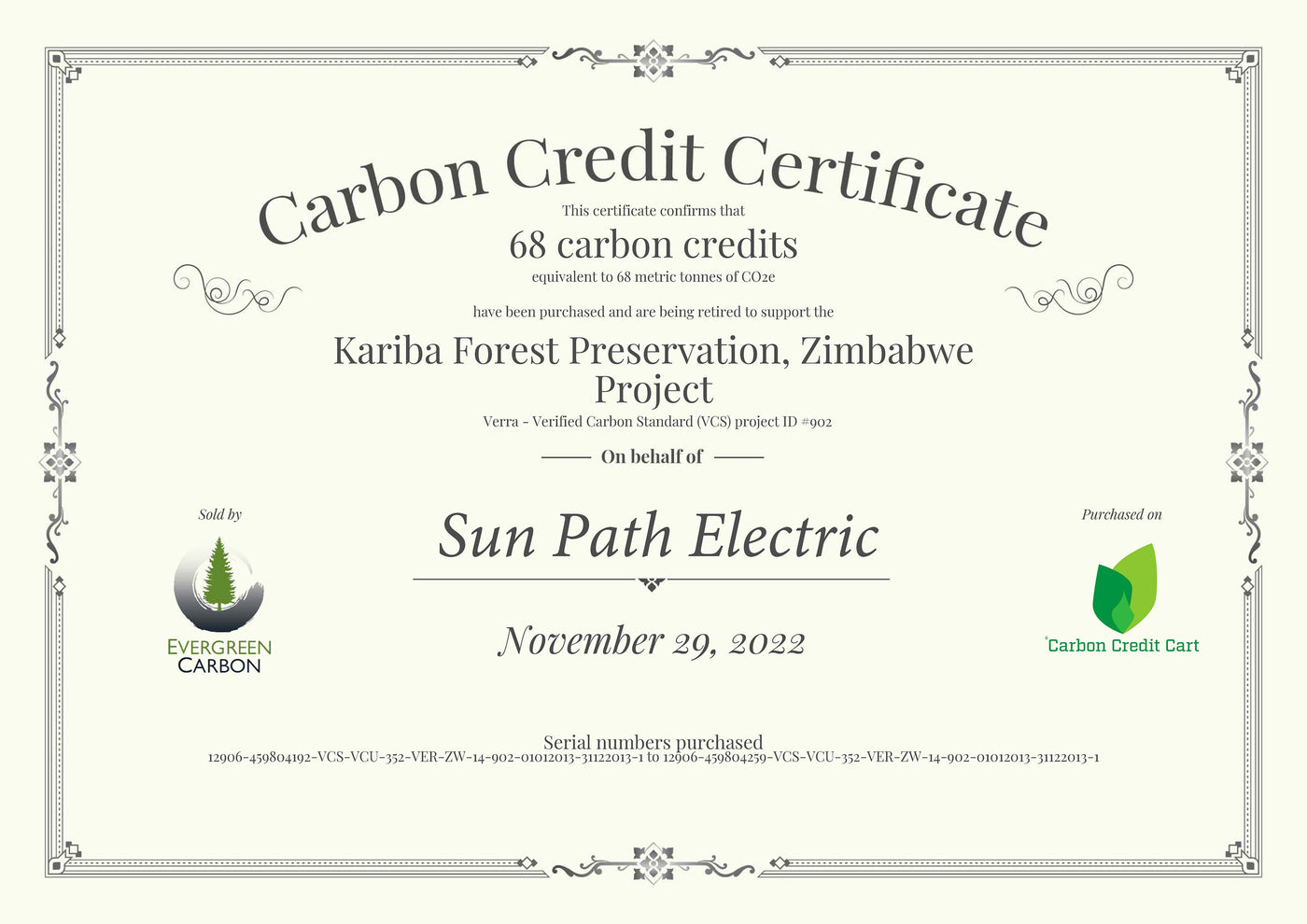
Offsetting our Unavoidable Carbon with Carbon Credit Cart
We are committed to living as lightly as we can as we go about our daily work and family business. We are grateful that there are now resources available to help us be carbon-free. We try to reduce the amount of climate-changing greenhouse gases we put into the environment by driving electric vehicles when we can, reducing our air travel and, of course, by powering our home and business by the sun, but in the course of living our lives and doing business, we still have an impact. Thankfully, we were able to track our carbon footprint by consulting with Evergreen Carbon and, now, we are able to easily offset our carbon emissions each year through the services of Carbon Credit Cart.- Sun Path Electric
- Tags: Carbon neutral Carbon offsets lower carbon footprint Solar company is carbon neutral

Climate Friendly Holiday Gift Ideas
With all the world’s eyes on COP26, it's the perfect time to shop more sustainably and raise climate change awareness among our own inner circle of family friends, and the approaching Holiday season provides the perfect opportunity to do so. We have compiled a few of our favorite climate friendly and sustainable holiday gift ideas, read on to see our top picks...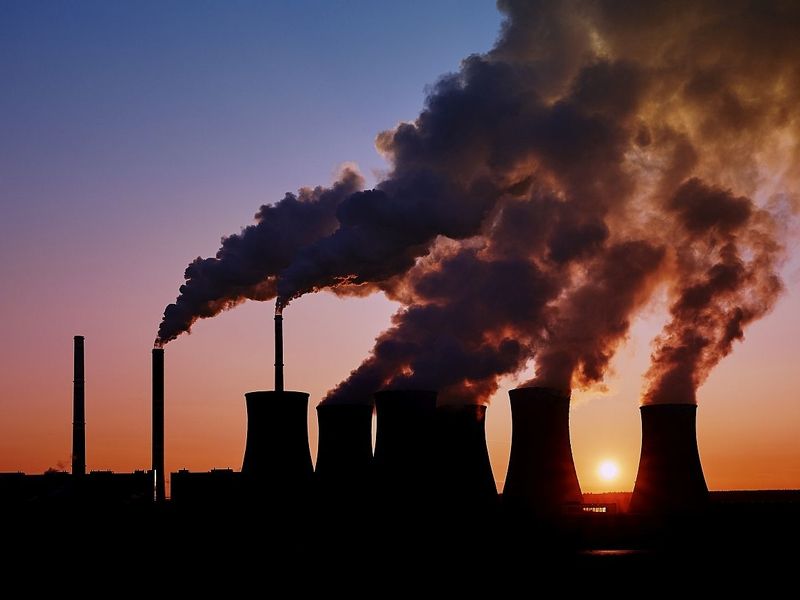
2 Key Climate Bills Passed by WA State Legislature
Shortly before adjourning on April 25, the Washington Legislature passed two important climate bills that will impact the state's solar industry...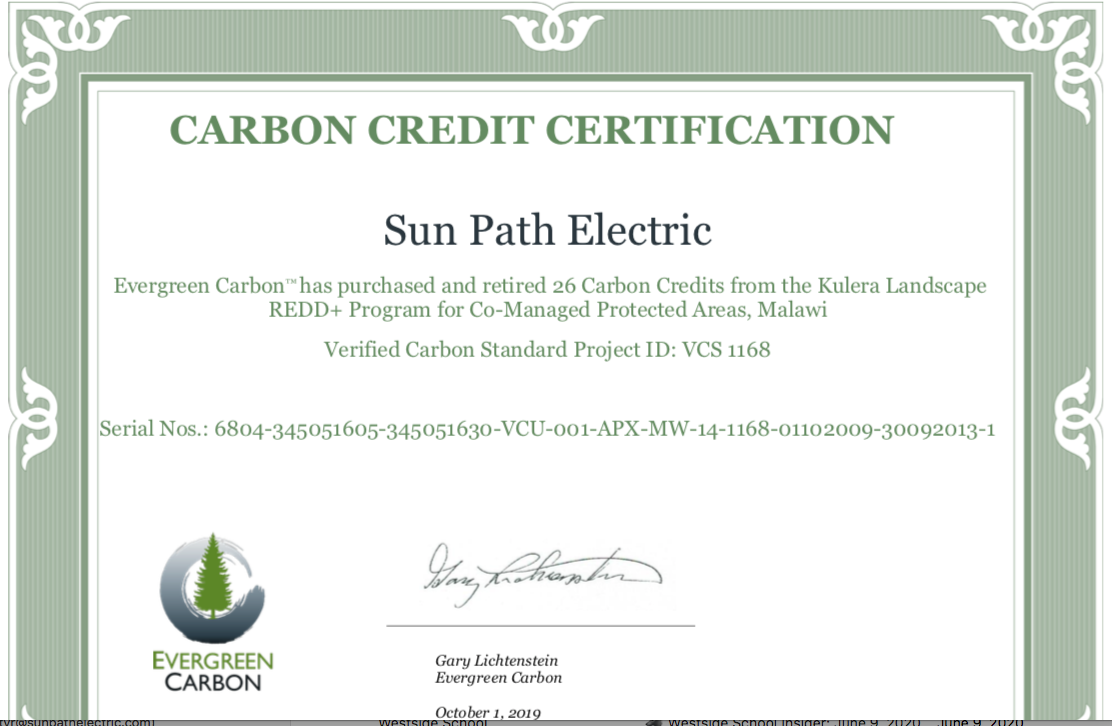
How to Make Sense of Carbon Offsets
It can be hard to know where to focus energy in our world today. It seems that we are collectively gaining understanding of challenges that have long-impacted so many – health, safety and social equity are on our minds on a daily basis. Climate change, and the fundamental, existential threat it poses, envelops all these issues. We are in a race against time to apply our collective ingenuity and resolve to combat this existential threat.
Thankfully, there are many working on solutions and right now, today, there are meaningful steps we can all take to reduce our individual carbon contribution to the climate change problem. Each individual, family, business and community has the ability to reduce our carbon footprint. One powerful tool is to “offset” the emissions produced in daily activities. Offsetting sets a price for carbon produced and that money can then be invested in projects that over the life of the project sequester, destroy or remove, avoid, carbon from atmosphere.
We, at Sun Path Electric, are committed to doing our part to help people add renewable energy generation to the mix. But, even this good work adds carbon to the atmosphere. So, to ensure we are living the solutions we work to create, we’ve developed a personalized carbon offset strategy. Sun Path founders, Kristy Royce and Briggs Neiman have been working with Seattle-based Evergreen Carbon to implement an offset plan for not only the business, but also their family.
Carbon What? How Do Offsets Work?
A carbon credit is generated from a specific project activity that destroys, sequesters or avoids greenhouse gas (GHG) emissions. One credit is equivalent to 1 Mt (metric tonne) of greenhouse gas emissions, as measured in carbon dioxide equivalency or CO2e. Credits are assigned a value, and are available for purchase. Carbon finance enables projects to exist that wouldn’t otherwise.
Projects that provide co-benefits for sustainable development, along with the carbon credits are the best. By offsetting unavoidable emissions, organizations are participants in sustainable development. Greenhouse gas management commitments can do inspiring work around the world, with purchase of carbon credits that meet strict, well regulated and high quality standards.
All offsets Evergreen Carbon provide are: Real, Additional, Verified, Registered, and Permanent.
Real – The project has to exist and the credits issues have to represent measurable reductions in greenhouse gases.
Additional – Projects have to be beyond business as usual for that industry. A project is demonstrated to be additional by showing that without carbon finance supporting the project, it wouldn’t happen. Projects have to meet legal, performance and financial standards.
Verified – An independent technically qualified, 3rd party verifies claims of generated carbon credits. Verification requires site visits, interviews and detailed documentation review. Only professionals, with the requisite technical and auditing skills are involved making sure the project credits are what they are claimed.
Registered – Carbon Credits can be used only once. GHG registries holds and tracks credits, while having no involvement in the sale of the credits. The registries provide a serial number and tracking that each credit is used only once and are unique.
Permanent – Carbon credits are only accounted for ex-post, they have to have already been generated. Credits cannot be reversed. Buffers and other safeguards are used to provide assurance of offset permanence.
A carbon credit is generated from a specific project activity that destroys, sequesters or avoids greenhouse gas (GHG) emissions. One credit is equivalent to 1 Mt (metric tonne) of greenhouse gas emissions, as measured in carbon dioxide equivalency or CO2e. Credits are assigned a value, and are available for purchase. Carbon finance enables projects to exist that wouldn’t otherwise.
Projects that provide co-benefits for sustainable development, along with the carbon credits are the best. By offsetting unavoidable emissions, organizations are participants in sustainable development. Greenhouse gas management commitments can do inspiring work around the world, with purchase of carbon credits that meet strict, well regulated and high quality standards.
Evergreen Carbon’s founder, Wolf Lichtenstein, has been working on multi-national carbon solutions for the last 15 years. He was drawn to this work after stretches as a software engineer and chemist, He is grateful for this path because it helped hone a systems-thinking world view that includes a detailed understanding of business, industry and corporate culture. Learn more about how Evergreen Carbon’s Offset Portfolio works.
Kristy, Briggs and their kids’ offset strategy factors in their daily lives, home and vacations, as well as the business - all energy, all rentals, electrical, all driving and 1 family air flight annually. Kristy and Briggs are passionate about healing our planet and they research choices diligently to ensure that their efforts are contributing to meaningful solutions. A key thing that they learned is that there is more carbon value in protecting trees than planting them. This knowledge helped them select the first project.
https://evergreencarbon.com/projects/featured-project-in-malawi-for-summer-2019/
“Part of the reason I go with Wolf is his offsets are the highest quality and very reasonable, as he just does not mark them up as much as some others I looked in to. He makes most of his living doing backend carbon accounting, so the offset business is really a sideline. He will buy the offsets in bulk at a net price and then sell them mostly to local Seattle businesses and friends. He is the real deal and is doing this to be part of the solution”
Wolf stresses that when selecting a carbon offset project, one should support projects that push the envelope and add to the international grid in a way that builds up local communities, as opposed to supporting established projects in the first world. “Don't buy solar credits in first world, instead consider the amplifying effect of supporting both ecological and social benefit in developing countries”. Renewable projects spur social equity, generate cleaner, greener jobs and build up the communities that need sustainable infrastructure. It is these projects that make markets stronger and build momentum for a global solution.
As valuable as offsets are, they are only part of an aggregate of growing, emerging and evolving solutions that weave together a number of “co-benefits”. Projects can be small and large scale, including such things as beekeeping and supporting Women-owned business along building with renewable energy projects, maintaining forests and planting trees. The UN has 20 Sustainable Development Goals, that illustrate the intersectionality of these co-benefits.
Additional Resources
Verra verifies the quality of projects around the world.
https://verra.org/
For individual flights, here are some good places to buy offsets:
https://nativeenergy.com/
https://standfortrees.org/en/
https://cotap.org/carbon-footprint-calculator/
A good flight calculator is:
https://www.myclimate.org/
By Rebecca Sayre
- Sun Path Electric
- Tags: Carbon neutral Carbon offsets Solar company is carbon neutral

